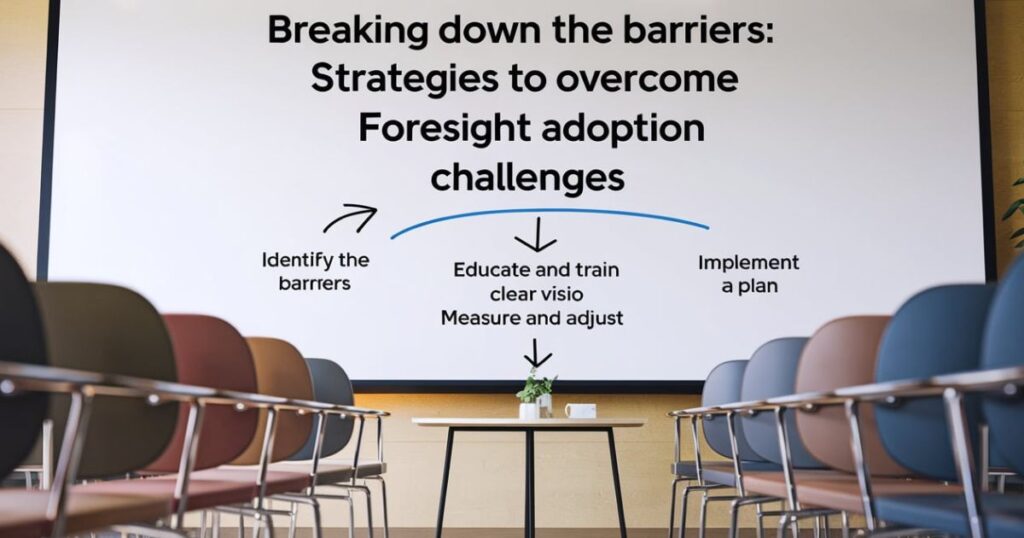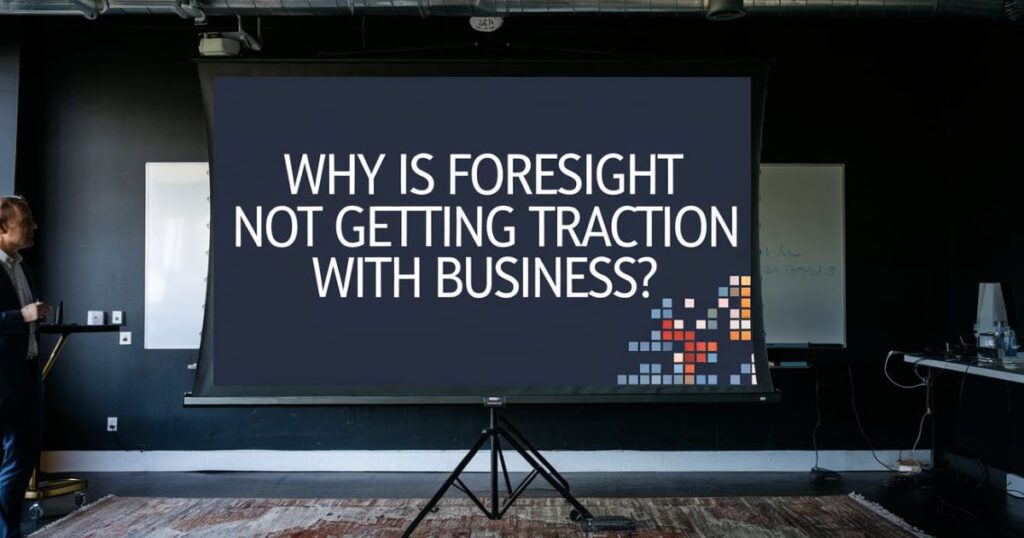In today’s rapidly evolving business landscape, the ability to anticipate and prepare for future challenges and opportunities is more crucial than ever. Yet, despite its immense potential, foresight the practice of systematically exploring, creating, and testing possible futures – isn’t gaining the traction it deserves in the corporate world.
This paradox begs the question: Why is foresight not getting traction with business? Let’s dive deep into this conundrum and uncover the factors hindering widespread adoption of this powerful strategic tool.
Understanding Foresight in Business: A Game-Changer in Disguise
Foresight isn’t just a buzzword; it’s a structured approach to navigating uncertainty. At its core, business foresight involves:
- Systematically scanning the environment for trends and weak signals
- Developing multiple plausible future scenarios
- Testing current strategies against these scenarios
- Identifying robust strategies that work across various futures
When implemented effectively, foresight can be a game-changer. It enables businesses to:
- Anticipate market shifts before competitors
- Identify emerging opportunities and threats
- Develop more resilient and adaptable strategies
- Foster a culture of innovation and forward-thinking
Yet, despite these compelling benefits, many businesses struggle to embrace foresight fully. Let’s explore why.
The Current State of Foresight in Business: A Mixed Bag
The adoption of foresight practices in business presents a mixed picture. While some forward-thinking companies have fully integrated foresight into their strategic planning processes, many others lag behind.
A 2023 survey by the Future Today Institute revealed that:
| Foresight Adoption Level | Percentage of Companies |
| Fully integrated | 18% |
| Partially implemented | 37% |
| Considering adoption | 28% |
| No plans to adopt | 17% |
These statistics highlight a significant gap between awareness and implementation. While 83% of companies recognize the potential value of foresight, only 18% have fully integrated it into their operations. This discrepancy brings us to the crux of our question: Why is foresight not getting traction with business?
Unraveling the Paradox: Why Businesses Struggle to Embrace Foresight
1. Short-term Thinking vs. Long-term Vision
In the fast-paced business world, there’s often an overwhelming focus on short-term results. Quarterly earnings reports, annual performance reviews, and immediate market pressures can overshadow the need for long-term strategic thinking. This myopic view makes it challenging for businesses to allocate resources and attention to foresight activities, which typically yield benefits over a longer time horizon.
2. Misconceptions about Foresight Methodologies
Many business leaders harbor misconceptions about what foresight entails. Some view it as mere crystal ball gazing or futuristic daydreaming. Others conflate it with traditional forecasting methods. These misunderstandings lead to skepticism about the practicality and value of foresight practices.
3. Resistance to Change and Uncertainty
Foresight often challenges existing assumptions and comfortable narratives about the future. It introduces uncertainty and complexity into decision-making processes. This can be unsettling for organizations accustomed to linear planning and predictable environments. The discomfort associated with exploring multiple, often conflicting, future scenarios can lead to resistance at various levels of the organization.
4. Lack of Resources and Expertise
Implementing robust foresight practices requires dedicated resources and specialized expertise. Many organizations, particularly small and medium-sized enterprises, may lack the financial means or in-house capabilities to undertake comprehensive foresight initiatives. The perceived cost and effort of building these capabilities can be a significant barrier to adoption.
5. Difficulty in Quantifying ROI
In a business world driven by metrics and KPIs, the intangible nature of foresight benefits can be a hard sell. Unlike more traditional business functions, the return on investment (ROI) for foresight activities isn’t easily quantifiable in the short term. This makes it challenging for foresight advocates to secure buy-in and resources from decision-makers focused on measurable outcomes.
Breaking Down the Barriers: Strategies to Overcome Foresight Adoption Challenges

While the obstacles to foresight adoption are significant, they’re not insurmountable. Here are some strategies businesses can employ to overcome these challenges:
1. Cultivate a Future-oriented Organizational Culture
Fostering a culture that values long-term thinking and embraces uncertainty is crucial. This involves:
- Encouraging curiosity and exploration of future possibilities
- Rewarding innovative thinking and calculated risk-taking
- Incorporating future scenarios into regular strategic discussions
2. Integrate Foresight into Existing Business Processes
Rather than treating foresight as a separate activity, integrate it into existing strategic planning and decision-making processes. This could involve:
- Including future scenario discussions in annual strategy retreats
- Incorporating trend analysis into market research activities
- Using foresight techniques in product development and innovation processes
3. Develop Foresight Capabilities Through Training and Hiring
Invest in building internal foresight capabilities by:
- Providing training in foresight methodologies to existing staff
- Hiring individuals with foresight expertise
- Creating cross-functional foresight teams
4. Leverage Technology for Better Future Insights
Utilize advanced technologies to enhance foresight practices:
- AI and machine learning for trend analysis and pattern recognition
- Big data analytics for identifying weak signals of change
- Virtual and augmented reality for immersive scenario exploration
5. Collaborate with External Foresight Experts and Networks
Tap into external expertise and resources by:
- Engaging with foresight consultancies for specialized projects
- Participating in industry foresight networks and communities
- Collaborating with academic institutions on future-focused research
The Future of Foresight in Business: A Brighter Horizon
As businesses grapple with increasing complexity and uncertainty, the value of foresight is becoming increasingly apparent. Emerging trends in foresight methodologies, such as participatory foresight and real-time scenario planning, are making these practices more accessible and relevant to a wider range of organizations.
The integration of AI and machine learning into foresight processes is also set to revolutionize the field. These technologies can enhance our ability to detect weak signals, generate and analyze scenarios, and provide real-time strategic insights.
As awareness grows and barriers diminish, we can expect to see a significant uptick in foresight adoption over the next decade. Organizations that embrace foresight now will be better positioned to navigate the complexities of an uncertain future.
Conclusion: Embracing Foresight for Sustainable Success
In conclusion, while foresight isn’t currently getting the traction it deserves in business, the tide is turning. The challenges of short-term thinking, misconceptions, resistance to change, resource constraints, and ROI quantification are real, but they’re not insurmountable.
By understanding these barriers and implementing strategies to overcome them, businesses can unlock the power of foresight. In doing so, they’ll be better equipped to navigate uncertainty, seize emerging opportunities, and build resilient strategies for long-term success.
The question isn’t whether businesses can afford to invest in foresight, but whether they can afford not to. In a world of rapid change and increasing complexity, foresight isn’t just a competitive advantage – it’s a necessity for survival and thriving in the future.





